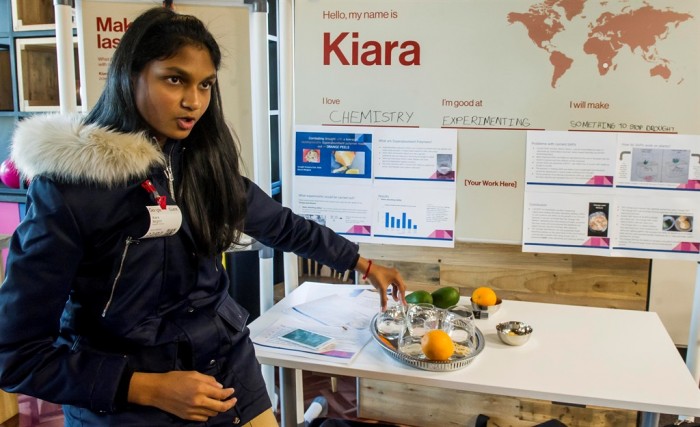From the Series

South Africa is presently experiencing its lowest rainfall since 1904 and arguably one of its worst droughts in 45 years. Last year, the country received 403 mm of rainfall – 66 per cent of the annual average. With food supplies under enormous strain and household food security directly affected a definitive solution must be reached. South African teenager, Kiara Nirghin, might just have the answer.
Recently awarded with the Google Science Fair Community Impact Award for her submission, “No More Thirsty Crops”, she devised a groundbreaking way of keeping crops hydrated for longer and at an affordable cost. By using orange peels and avocado skins Nirghin produced a Super Absorbent Polymer (SAP) that carries approximately 300 times its weight in liquid relative to its own mass. The polymer was organically cross-linked with polymerisation through UV light and heat, after which a process of emulsion polymerisation was conducted using the oil found in avocado peels that was added to the boiled orange peels. The polymer was then left to dry in the sun using photo polymerisation. The result: A water-retaining hydrogel that act as a water reservoir in the soil.
"I found that natural occurring polymers exist in most citrus fruits. Orange peels contain over 64 per cent of polysaccharide making it a candidate for biodegradable polymer. The product should be able to retain large amounts of water and combat the effects of drought on crops by retaining soil moisture, whilst still recycling waste products of the juice manufacturing industry," explains Nirghin.
This innovative product has the ability to retain large volumes of water to combat the dry climate and its harsh effects on crops by retaining the moisture of the soil, while simultaneously recycling the waste products (fruit and vegetable peels) of the juice manufacturing industry. It is a low-cost solution for local farmers as it is made using orange peels and avocado skins.
Nirghin’s love for science was cultivated at the tender age of seven where kitchen experiments intrigued her. “I vividly remember at the age of seven experimenting with vinegar and baking soda solutions in plastic cups. My natural curiosity and questioning nature has sparked my everlasting love of science,” she says. “I also house a great interest in food science and baking. I believe that food and chemistry are undoubtedly linked in the intertwined science web. I love molecular gastronomy and the application of scientific principles in food creation,” she states.
Nirghin’s revolutionary agricultural idea could impact the African continent exponentially and could play an integral role in managing the effects of droughts. Nirghin adds, “M.S Swaminathan, has always been an inspiration of mine as he truly believed in the necessary movement of not only India but the whole world towards sustainable agricultural development. I hope to one day become a scientist specialising in agricultural science and a molecular gastronomist.”
This 16-year-old scientist proves that creativity can be explored at any age – it just needs a platform to showcase innovative thinking.
Nirghin finds out on 11 August 2016 if she’s made it to the final 16.







